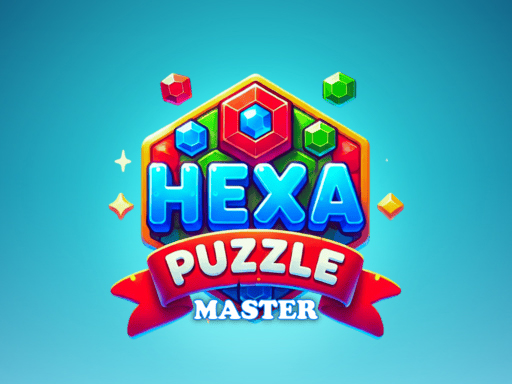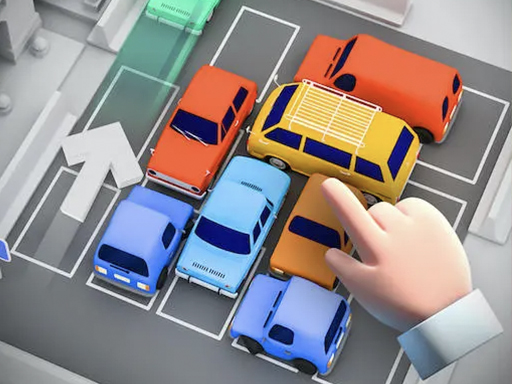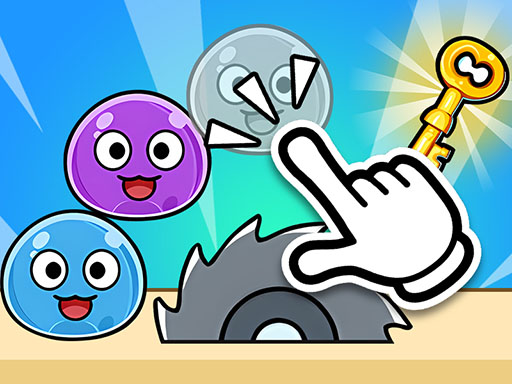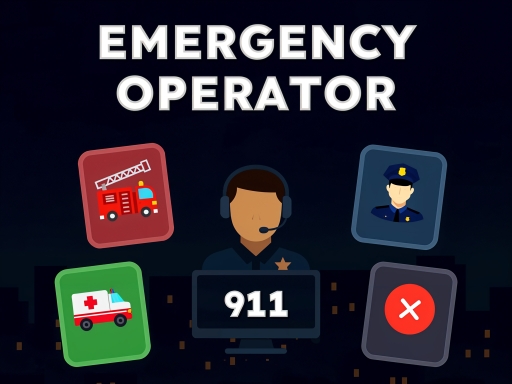Pathfinder: One Line Logic
About Pathfinder: One Line Logic
Okay, listen, you know how sometimes you just stumble across a game, almost by accident, and it just *clicks*? Like, it wasn't on your radar, you didn't see a huge marketing blitz, but something about it just grabs you and won't let go? That's exactly what happened to me with Pathfinder: One Line Logic. Honestly, I’m still buzzing from it, and I’ve been trying to figure out how to describe it to you without just sounding like I’m rambling, because it’s genuinely one of those discoveries that makes you remember why you love gaming in the first place.
You know me, I’ve always been drawn to games that make you *think*. Not just reflex-based stuff, though I love a good action game, but something that scratches that particular itch in your brain, that moment where a complex problem suddenly unfurls into elegant simplicity. That’s Pathfinder: One Line Logic in a nutshell, but it’s so much more than just a puzzle game. It’s an *experience* of pure, unadulterated mental flow.
The core concept is deceptively simple, almost laughably so at first glance: you have to draw a single, continuous line to solve a puzzle. That’s it. No lifting your finger, no crossing your own path, just one fluid motion from start to finish. What’s fascinating is how many different, incredibly clever scenarios they’ve built around this one fundamental rule. The initial impression might be, “Oh, okay, a line-drawing game, sure,” but then you start playing, and it’s like a switch flips. Suddenly, you’re not just drawing lines; you’re orchestrating chaos, untangling knots, guiding destinies.
Let me tell you about one of the modes that really hooked me, the one they mentioned about helping people find the right toilet. Now, I know, it sounds a bit silly on paper, right? But picture this: you’ve got a bustling scene, a public space, maybe a park or a mall. Little characters pop up, some boys, some girls, and they all have an urgent need. And there are toilets scattered around, clearly marked for gender. Your job, with that single, unbroken line, is to draw a path for each character to their appropriate destination. Sounds easy? Ha! Just wait.
At first, it’s a gentle introduction. Maybe two kids, two toilets. You draw a quick line for the boy, then a line for the girl, making sure they don’t cross paths. Simple. But then, the game starts layering on the complexity. Suddenly, there are four kids, then six, then eight, all appearing at different points, all needing to get to their respective stalls, and the map itself becomes a labyrinth. You’re not just drawing lines anymore; you’re planning traffic flow, anticipating collisions, creating a delicate dance of movement across the screen. You’ll find yourself staring at the screen, finger hovering, almost feeling the tension in your shoulders as you try to visualize the perfect serpentine route that will guide everyone safely without a single overlap.
And the brilliant thing about this is the emotional connection you develop. You feel a genuine sense of urgency for these little digital people! You don't want them to collide, you don't want them to get lost. There's a moment of pure, unadulterated relief when you successfully guide the last one to their destination, and the whole screen lights up with a satisfied "ding." It’s a rush, honestly. That particular mode, it’s like being a benevolent, omniscient traffic controller for tiny, bladder-strained citizens.
But that’s just one of the six ways to play, and this is where Pathfinder: One Line Logic truly shines. They take that core mechanic and twist it in so many ingenious directions. Imagine, for instance, a different scenario: you’re a master cartographer, and you need to chart a path for a brave adventurer through a treacherous dungeon. The dungeon map is a grid of interconnected rooms, some safe, some filled with traps, some holding treasure. Your single line has to start at the entrance, visit every treasure room, avoid every trap, and end at the exit, all without crossing itself. The level of spatial reasoning this demands is incredible. You're not just drawing; you're *exploring* possibilities in your mind, tracing mental paths before you commit. You can almost feel the dusty dungeon air, the weight of the ancient map in your hands.
Then there’s another mode that feels like you’re a futuristic engineer. You’re presented with a complex circuit board, a tangle of power nodes and devices. Your task is to draw a single power line that connects the main power source to all the necessary components – maybe a series of lights, or a robot assembly line – without short-circuiting anything by crossing wires. The visual feedback is so satisfying; as your line connects, you see the power flow, the lights flicker on, the gears whirring to life. It’s that moment when a strategy finally clicks into place, when you see the elegant solution to what seemed like an impossible mess, that makes your brain light up in the same way the circuit board does.
What I love about games like this is how they train your mind. You start seeing patterns where you didn’t before. You develop an intuitive understanding of space and connectivity. In my experience, the best moments come when you’ve been stuck on a level for a while, maybe you’ve tried a dozen different approaches, and you’re starting to feel that familiar gamer frustration – the good kind, the kind that makes victory sweeter. You take a breath, maybe step away for a minute, and then you come back, look at the puzzle with fresh eyes, and *bam!* The solution just appears, clear as day. It’s like the game is rewarding your persistence, your willingness to push past the initial mental block. That "aha!" moment, that feeling of intellectual triumph, is what keeps you coming back.
The game also has this subtle way of building anticipation. Each level starts with a clean slate, a new challenge, and you find yourself wondering, "Okay, what's the trick here? What's the elegant path I'm missing?" The visual design is clean and unobtrusive, letting the puzzles themselves be the star. There's no unnecessary clutter, just the elements you need to solve the problem, which I really appreciate. It’s all about clarity and focus.
And the difficulty curve? It’s masterfully handled. It starts off gentle enough that anyone can pick it up and feel smart, but it quickly ramps up, introducing new obstacles, tighter spaces, more elements to consider. You’ll hit levels that feel genuinely impossible, where you’re convinced there *can’t* be a solution, only to discover some brilliant, unexpected route you never even considered. The real magic happens when you start thinking several steps ahead, visualizing the entire path before you even make your first stroke. It’s like playing chess, but with lines instead of pieces.
Honestly, I’ve lost entire afternoons to this game. You start playing, thinking you’ll just do a couple of levels, and then you look up and the sun’s gone down. It just pulls you into that flow state where time ceases to exist. There's something magical about a game that can achieve that with such a simple premise. It’s not about flashy graphics or an epic storyline; it’s about the pure joy of problem-solving, the satisfaction of turning a tangled mess into a beautifully elegant solution.
It’s the kind of game that, when you finally put your device down, you feel like your brain has had a good workout, stretched in all the right ways. You might even find yourself looking at real-world problems differently, trying to find the "one line" solution in everyday situations. That's the mark of a truly great puzzle game, I think – one that transcends the screen and subtly changes the way you perceive the world, even if just a little bit. If you're someone who loves that feeling of a mental challenge, that deep satisfaction of cracking a tough nut, then you absolutely have to check out Pathfinder: One Line Logic. Trust me, you won't regret it. It's a gem, a real hidden treasure, and I can't wait for you to experience that spark of discovery for yourself.
You know me, I’ve always been drawn to games that make you *think*. Not just reflex-based stuff, though I love a good action game, but something that scratches that particular itch in your brain, that moment where a complex problem suddenly unfurls into elegant simplicity. That’s Pathfinder: One Line Logic in a nutshell, but it’s so much more than just a puzzle game. It’s an *experience* of pure, unadulterated mental flow.
The core concept is deceptively simple, almost laughably so at first glance: you have to draw a single, continuous line to solve a puzzle. That’s it. No lifting your finger, no crossing your own path, just one fluid motion from start to finish. What’s fascinating is how many different, incredibly clever scenarios they’ve built around this one fundamental rule. The initial impression might be, “Oh, okay, a line-drawing game, sure,” but then you start playing, and it’s like a switch flips. Suddenly, you’re not just drawing lines; you’re orchestrating chaos, untangling knots, guiding destinies.
Let me tell you about one of the modes that really hooked me, the one they mentioned about helping people find the right toilet. Now, I know, it sounds a bit silly on paper, right? But picture this: you’ve got a bustling scene, a public space, maybe a park or a mall. Little characters pop up, some boys, some girls, and they all have an urgent need. And there are toilets scattered around, clearly marked for gender. Your job, with that single, unbroken line, is to draw a path for each character to their appropriate destination. Sounds easy? Ha! Just wait.
At first, it’s a gentle introduction. Maybe two kids, two toilets. You draw a quick line for the boy, then a line for the girl, making sure they don’t cross paths. Simple. But then, the game starts layering on the complexity. Suddenly, there are four kids, then six, then eight, all appearing at different points, all needing to get to their respective stalls, and the map itself becomes a labyrinth. You’re not just drawing lines anymore; you’re planning traffic flow, anticipating collisions, creating a delicate dance of movement across the screen. You’ll find yourself staring at the screen, finger hovering, almost feeling the tension in your shoulders as you try to visualize the perfect serpentine route that will guide everyone safely without a single overlap.
And the brilliant thing about this is the emotional connection you develop. You feel a genuine sense of urgency for these little digital people! You don't want them to collide, you don't want them to get lost. There's a moment of pure, unadulterated relief when you successfully guide the last one to their destination, and the whole screen lights up with a satisfied "ding." It’s a rush, honestly. That particular mode, it’s like being a benevolent, omniscient traffic controller for tiny, bladder-strained citizens.
But that’s just one of the six ways to play, and this is where Pathfinder: One Line Logic truly shines. They take that core mechanic and twist it in so many ingenious directions. Imagine, for instance, a different scenario: you’re a master cartographer, and you need to chart a path for a brave adventurer through a treacherous dungeon. The dungeon map is a grid of interconnected rooms, some safe, some filled with traps, some holding treasure. Your single line has to start at the entrance, visit every treasure room, avoid every trap, and end at the exit, all without crossing itself. The level of spatial reasoning this demands is incredible. You're not just drawing; you're *exploring* possibilities in your mind, tracing mental paths before you commit. You can almost feel the dusty dungeon air, the weight of the ancient map in your hands.
Then there’s another mode that feels like you’re a futuristic engineer. You’re presented with a complex circuit board, a tangle of power nodes and devices. Your task is to draw a single power line that connects the main power source to all the necessary components – maybe a series of lights, or a robot assembly line – without short-circuiting anything by crossing wires. The visual feedback is so satisfying; as your line connects, you see the power flow, the lights flicker on, the gears whirring to life. It’s that moment when a strategy finally clicks into place, when you see the elegant solution to what seemed like an impossible mess, that makes your brain light up in the same way the circuit board does.
What I love about games like this is how they train your mind. You start seeing patterns where you didn’t before. You develop an intuitive understanding of space and connectivity. In my experience, the best moments come when you’ve been stuck on a level for a while, maybe you’ve tried a dozen different approaches, and you’re starting to feel that familiar gamer frustration – the good kind, the kind that makes victory sweeter. You take a breath, maybe step away for a minute, and then you come back, look at the puzzle with fresh eyes, and *bam!* The solution just appears, clear as day. It’s like the game is rewarding your persistence, your willingness to push past the initial mental block. That "aha!" moment, that feeling of intellectual triumph, is what keeps you coming back.
The game also has this subtle way of building anticipation. Each level starts with a clean slate, a new challenge, and you find yourself wondering, "Okay, what's the trick here? What's the elegant path I'm missing?" The visual design is clean and unobtrusive, letting the puzzles themselves be the star. There's no unnecessary clutter, just the elements you need to solve the problem, which I really appreciate. It’s all about clarity and focus.
And the difficulty curve? It’s masterfully handled. It starts off gentle enough that anyone can pick it up and feel smart, but it quickly ramps up, introducing new obstacles, tighter spaces, more elements to consider. You’ll hit levels that feel genuinely impossible, where you’re convinced there *can’t* be a solution, only to discover some brilliant, unexpected route you never even considered. The real magic happens when you start thinking several steps ahead, visualizing the entire path before you even make your first stroke. It’s like playing chess, but with lines instead of pieces.
Honestly, I’ve lost entire afternoons to this game. You start playing, thinking you’ll just do a couple of levels, and then you look up and the sun’s gone down. It just pulls you into that flow state where time ceases to exist. There's something magical about a game that can achieve that with such a simple premise. It’s not about flashy graphics or an epic storyline; it’s about the pure joy of problem-solving, the satisfaction of turning a tangled mess into a beautifully elegant solution.
It’s the kind of game that, when you finally put your device down, you feel like your brain has had a good workout, stretched in all the right ways. You might even find yourself looking at real-world problems differently, trying to find the "one line" solution in everyday situations. That's the mark of a truly great puzzle game, I think – one that transcends the screen and subtly changes the way you perceive the world, even if just a little bit. If you're someone who loves that feeling of a mental challenge, that deep satisfaction of cracking a tough nut, then you absolutely have to check out Pathfinder: One Line Logic. Trust me, you won't regret it. It's a gem, a real hidden treasure, and I can't wait for you to experience that spark of discovery for yourself.
Enjoy playing Pathfinder: One Line Logic online for free on Coduxa. This Puzzle game offers amazing gameplay and stunning graphics. No downloads required, play directly in your browser!
How to Play
Mouse click or tap to play





Comments
This game is awesome! I love the graphics and gameplay.
One of the best games I've played recently. Highly recommended!